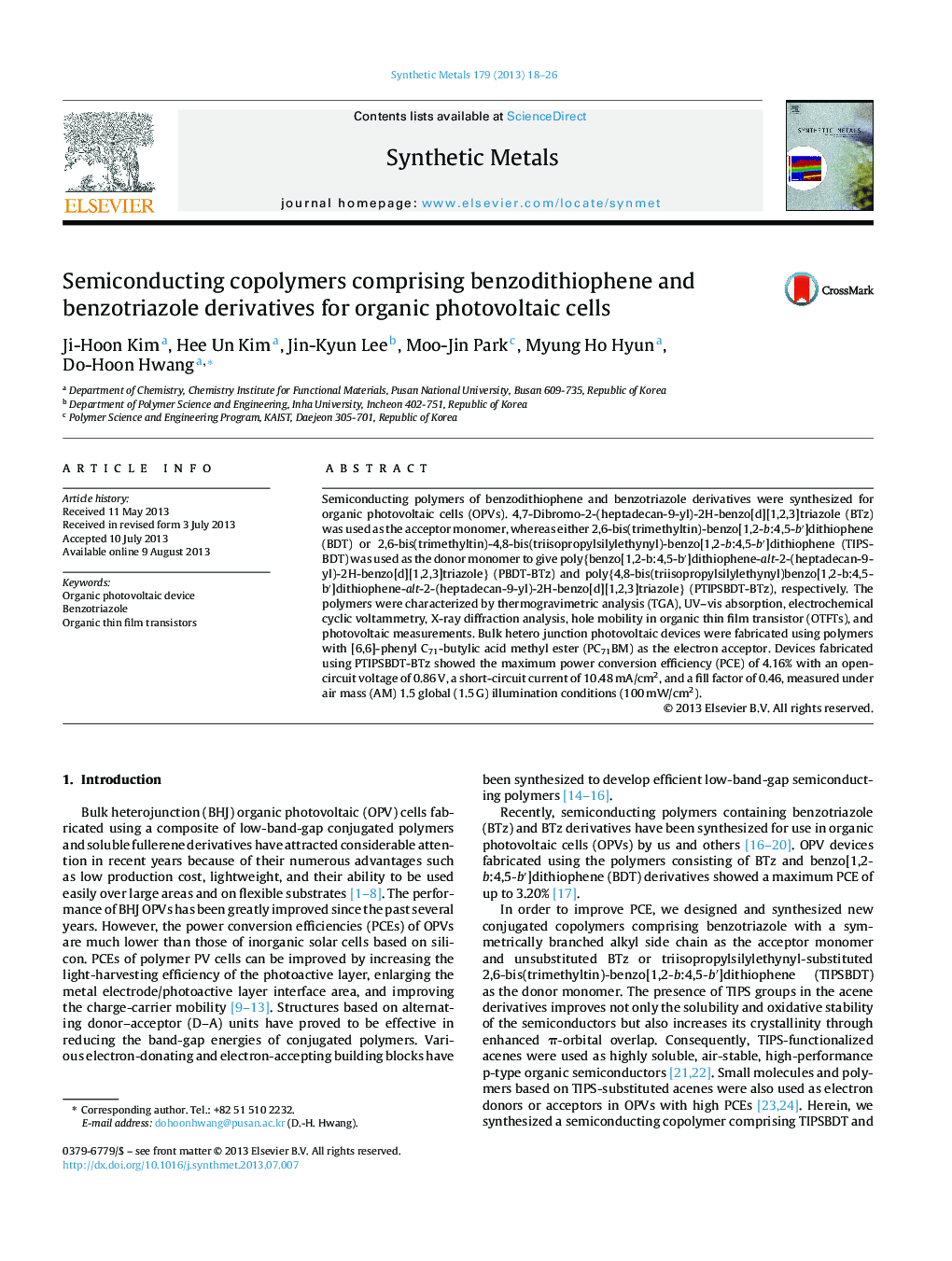| Article ID | Journal | Published Year | Pages | File Type |
|---|---|---|---|---|
| 1441241 | Synthetic Metals | 2013 | 9 Pages |
•Conjugated polymers comprising benzodithiophene and benzotriazole derivatives were synthesized.•The synthesized polymers were used as p-type donor materials for OPVs.•Bulk heterojunction organic photovoltaic cells were fabricated using the polymers.•One of fabricated devices showed a power conversion efficiency of 4.16%.
Semiconducting polymers of benzodithiophene and benzotriazole derivatives were synthesized for organic photovoltaic cells (OPVs). 4,7-Dibromo-2-(heptadecan-9-yl)-2H-benzo[d][1,2,3]triazole (BTz) was used as the acceptor monomer, whereas either 2,6-bis(trimethyltin)-benzo[1,2-b:4,5-b′]dithiophene (BDT) or 2,6-bis(trimethyltin)-4,8-bis(triisopropylsilylethynyl)-benzo[1,2-b:4,5-b′]dithiophene (TIPSBDT) was used as the donor monomer to give poly{benzo[1,2-b:4,5-b′]dithiophene-alt-2-(heptadecan-9-yl)-2H-benzo[d][1,2,3]triazole} (PBDT-BTz) and poly{4,8-bis(triisopropylsilylethynyl)benzo[1,2-b:4,5-b′]dithiophene-alt-2-(heptadecan-9-yl)-2H-benzo[d][1,2,3]triazole} (PTIPSBDT-BTz), respectively. The polymers were characterized by thermogravimetric analysis (TGA), UV–vis absorption, electrochemical cyclic voltammetry, X-ray diffraction analysis, hole mobility in organic thin film transistor (OTFTs), and photovoltaic measurements. Bulk hetero junction photovoltaic devices were fabricated using polymers with [6,6]-phenyl C71-butylic acid methyl ester (PC71BM) as the electron acceptor. Devices fabricated using PTIPSBDT-BTz showed the maximum power conversion efficiency (PCE) of 4.16% with an open-circuit voltage of 0.86 V, a short-circuit current of 10.48 mA/cm2, and a fill factor of 0.46, measured under air mass (AM) 1.5 global (1.5 G) illumination conditions (100 mW/cm2).
Graphical abstractFigure optionsDownload full-size imageDownload as PowerPoint slide
